Las motocicletas no son sólo un medio de transporte, sino también máquinas de precisión, potencia y rendimiento. En todas sus armoniosas líneas y rugientes motores se esconde una insidiosa tecnología. Uno de los componentes más sagrados de la fabricación de motocicletas es la fundición a presión, que procesa piezas resistentes y duraderas a la vez que ligeras. Encontrada en los escudos del motor, los frenos y entre otros componentes, la fundición proporciona al motor más economía, sin dejar de perseguir la seguridad y la apariencia.
En los últimos años, la industria de la motocicleta ha recurrido a Asia, y en concreto a China, como fuente de producción fiable y rentable. Gracias a los avances tecnológicos, China se ha situado en primera línea como uno de los centros de fundición a presión de motocicletas OEM del país. Como fabricante, usted tiene asegurada la asequibilidad, la personalización y la garantía de calidad.
En este artículo, entenderemos cómo funciona el proceso de fundición de piezas de motocicletas, sus ventajas, usos y la razón por la que muchas marcas internacionales optan por subcontratar a China cuando se trata de soluciones OEM.
¿Qué significa fundir piezas de motocicleta?
La fundición de piezas de motocicletas es un proceso de fabricación de motocicletas en el que el metal fundido se vierte en un molde especialmente diseñado, que luego se asienta y adopta la forma prevista en el molde. Se ha convertido en un elemento clave de la fabricación de motocicletas en las últimas décadas, ya que es muy resistente, preciso y barato.
A diferencia del mecanizado, que consiste en recortar formas de una pieza sólida de metal, la fundición puede producir formas extremadamente complejas con una sola operación. Por eso es perfecta para fabricar cárteres de motor, tapas de caja de cambios, componentes de frenos, llantas y otras piezas importantes de una motocicleta, que deben ser duraderas y precisas.
Por qué es importante la fundición en las motos
Las motocicletas son máquinas que buscan un alto rendimiento. Todas sus piezas tienen que ser ligeras para aumentar la velocidad y el ahorro de combustible, pero potentes para soportar la presión, las vibraciones y el calor. La fundición es ideal para reducir el peso y la resistencia estructural.
- Resistencia y seguridad Las piezas de fundición son más fuertes para resistir grandes esfuerzos e impactos, vitales para garantizar la seguridad del motorista.
- Precisión y exactitud La fundición puede conseguir dimensiones precisas, haciendo que todas las piezas encajen perfectamente entre sí.
- Alta productividad de las actividades industriales- Las empresas pueden producir grandes cantidades de piezas sin que la calidad se vea afectada.
- Rentabilidad - La fundición es menos costosa que el mecanizado o la forja porque el proceso genera muy pocos residuos.
Esa es la razón por la que las industrias de motocicletas utilizan tanto procesos como la fundición a presión.
La fundición de componentes de motocicletas: El proceso
Las piezas de motocicletas se construyen rigurosamente con precisión y durabilidad. La fundición es uno de los métodos que más tiempo ahorra en la construcción de piezas de este tipo. La fundición a presión es el método más empleado en la producción de motocicletas, ya que se trata de un proceso muy resistente, preciso y rentable. A continuación se detalla el proceso.
1. Diseño y moldeado
Todo empieza con una buena planificación. Los ingenieros emplean potentes programas de diseño asistido por ordenador (CAD) para crear representaciones informáticas de los componentes de la motocicleta. Cada dimensión, curva y tolerancia se especifica al detalle. Tras el diseño, se fabrica un molde de acero, también llamado matriz. El molde tiene dos mitades y, una vez sellado, recorta una cavidad con la forma exacta de la pieza de la moto. El molde soportará altas presiones y temperaturas porque se utilizará muchas veces en la producción en serie.
2. Metal fundido
El segundo paso es la preparación de la materia prima. Los metales más habituales en la fundición a presión de motocicletas, por sus características de ligereza y su magnífica relación resistencia-peso, son los de las aleaciones de aluminio. Otros metales que también pueden utilizarse, dependiendo de la aplicación, son el zinc y el magnesio. A continuación, estos metales se funden en un horno a altas temperaturas, que en la mayoría de los casos oscilan entre 600 °C y 700 °C. Es importante garantizar que el metal fundido pueda fluir libremente durante la fundición, y esto sólo puede lograrse manteniendo una temperatura constante.
3. Inyección o vertido
Una vez fundido, el metal se introduce a presión en el molde. En la fundición a presión, esta presión alcanza los 1.500 bares. Tal fuerza tiene por objeto garantizar que el metal líquido fluya hasta cada rincón y detalle del molde. En comparación con la fundición por gravedad, en la que el metal fundido fluye dentro de un molde, la fundición a presión garantiza más precisión y menos posibilidades de que se formen burbujas o fallos graves en la pieza.
4. Solidificación y enfriamiento
El metal caliente dentro del molde se enfría rápidamente. El propio molde está construido con tubos de refrigeración especiales que permiten controlar la temperatura y hacer que la pieza se endurezca uniformemente. El enfriamiento rápido también reduce el tiempo de producción y mejora la combinación metálica interior para hacerla más fuerte y duradera. Además, la pieza adquiere su forma final a medida que el metal se solidifica por completo.
5. El rechazo de la Parte
Cuando el metal se solidifica, los dos lados del molde se separan y la pieza solidificada es expulsada. Esto se hace normalmente mediante unos pasadores eyectores previstos en el molde. El proceso de fundición a presión está bien automatizado, por lo que el molde puede volver a abrirse de inmediato y estar listo para iniciar el siguiente ciclo. Esto hace que sea muy eficaz en la fabricación de grandes cantidades de la misma pieza de motocicleta.
6. Recorte y limpieza
En el momento de la expulsión, es frecuente que la pieza fundida contenga finas capas de material sobrante en sus bordes. Este material adicional, denominado rebaba, se desprende. Dependiendo de la sección, se puede realizar un trabajo adicional de limpieza u, incluso, chorro de arena o granallado, para alisar la zona. Esto hace que la pieza parezca limpia y la deja lista para someterse a cualquier otro acabado.
7. Mecanizado y acabado de superficies
La fundición da formas muy precisas, pero algunas de las piezas de la motocicleta tienen que someterse a un mecanizado secundario. Por ejemplo, puede ser necesario taladrar agujeros, cortar roscas o pulir algunas superficies para cumplir requisitos específicos. El producto acabado no puede mecanizarse, por lo que se aplican tratamientos de acabado. Estos pueden ser recubrimiento en polvo, pintura, pulido o anodizado, que no sólo es estéticamente agradable, sino que también añade más propiedades de resistencia a la corrosión y prolonga la vida útil de las piezas.
8. Mirar y gestionar la calidad
En la fabricación de motocicletas, la calidad es fundamental, ya que un simple fallo puede poner en peligro la seguridad. Todos los componentes de fundición se someten a estrictos controles para garantizar que rinden al nivel exigido a los actores del sector. Esto puede incluir inspecciones dimensionales, pruebas de tensión e inspecciones más complejas como rayos X o ultrasonidos para detectar daños internos. Los controles de calidad se realizan en las piezas que luego se dejan ensamblar.
9. Montaje y uso final
Una vez inspeccionadas y con la calidad aprobada, las piezas acabadas se envían a la cadena de montaje de motocicletas. Pueden incorporarse al motor, al sistema de frenado, a la transmisión o al chasis. Gracias a la precisión del proceso de fundición a presión, los fabricantes pueden obtener piezas uniformes, fiables y fácilmente integrables en motocicletas de alto rendimiento.
Ejemplos de componentes de motocicletas fundidos
- Piezas de fundición y culatas. proteger las piezas del motor que soportan el estrés de las altas temperaturas.
- Componentes de freno Incluye pinzas y carcasas que deben soportar fuerza y presión.
- Tapas de caja de cambios y carcasas de embrague- Proteger y apoyar el sistema de transmisión.
- Ruedas y llantas Estas ruedas son ligeras y muy duraderas gracias a su característica de fundición a presión.
- Piezas del sistema de combustible Deben ser resistentes a la corrosión, así como exigir un sellado de gran precisión.
La fundición también hace que estas piezas, con la resistencia y precisión necesarias, sean mucho menos costosas y requieran menos tiempo.
Tipos de piezas moldeadas en motocicletas usadas
La fabricación de motocicletas contiene una variedad de métodos de fundición diferentes basados en el tipo de pieza que se está creando, cuánta resistencia se requiere y el volumen de piezas que se crean. Cada método tiene unos puntos fuertes y débiles. Los siguientes tipos de fundición son los más extendidos en la industria de la motocicleta.
1. Fundición a presión
La técnica más abundante consiste en moldear a presión piezas de acero con aluminio o zinc fundidos. Con ella se fabrican piezas precisas, de alta precisión y bajo peso, por ejemplo carcasas de motor, tapas de cajas de medidores y frenos.
2. Fundición por gravedad
El metal suelto se vierte en un molde bajo la fuerza de la gravedad. Tiene menos ciclos, pero forma secciones resistentes a la tracción que suelen aplicarse a soportes o carcasas.
3. Fundición en arena
A continuación, se rellena un molde de arena con metal fundido. El proceso es económico en piezas grandes o de desarrollo de la motocicleta, pero carece de precisión.
4. Fundición a la cera perdida
También se denomina fundición a la cera perdida y se utiliza para crear piezas muy detalladas y complejas. Suelen aplicarse a pequeñas piezas complejas de motocicletas.
5. Colada a baja presión
Aplica la fuerza de los gases para forzar la fundición del metal. Se utiliza coloquialmente para fabricar ruedas y llantas sólidas y sin defectos.
Razones por las que los fabricantes eligen la fundición
Casting ofrece lo siguiente a los fabricantes de motocicletas:
- Durabilidad- Las aleaciones de aluminio fundido son más ligeras pero lo bastante robustas para su uso cotidiano.
- Especificaciones coincidentes Todas las piezas cumplen exactamente las especificaciones
- Flexibilidad- Casi cualquier forma es posible cuando se utiliza la fundición
- Escalabilidad- Las fábricas pueden fabricar miles de piezas en un día.
Esta es la razón por la que el proceso de fundición de motocicletas ha seguido siendo la base de la fabricación de motocicletas en todo el mundo.
Fundición de piezas de motocicleta con materiales
1. Aleaciones de aluminio
El material más utilizado para fundir a presión una motocicleta es el aluminio. Las aleaciones de aluminio son sencillas, esencialmente, robustas y resistentes a la corrosión, y gracias a ellas, el aluminio se utiliza en carcasas de motor, culatas, tapas de cajas de cambio y llantas.
2. Aleaciones de zinc
La artesanía del zinc es más pesada que la del aluminio y consigue grandes niveles de resistencia y precisión de los detalles. Se aplica sobre todo a los componentes más pequeños, como soportes, carcasas y ornamentación.
3. Aleaciones de magnesio
El magnesio es más ligero que el aluminio, por lo que puede utilizarse en motocicletas de altas prestaciones en las que se exige una reducción de peso. No obstante, es un producto más caro que requiere ciertas consideraciones de manejo.
4. Acero y hierro (en fundición en arena)
El acero y el hierro fundido se utilizan en fundición en arena para algunas piezas de motocicletas de gran resistencia. Estos materiales son robustos pero más pesados, de ahí que sean aplicables en ámbitos en los que se necesitan materiales más resistentes que pesados.
Resumiendo:
Aleaciones de aluminio: son los más habituales (ligeros, fuertes, resistentes a la corrosión)
Aleaciones de zinc: componentes más pequeños y precisos
Aleaciones de magnesio: bicicletas ligeras y de altas prestaciones
Acero/hierro: brocas para trabajos pesados.
Importancia de la fundición a presión en la fabricación de motocicletas
En el rendimiento de una motocicleta influye mucho la calidad de las piezas. La fundición a presión es un proceso en el que el metal fundido se introduce a presión en la cavidad de una matriz. Cuando se enfría, el resultado es un componente resistente y bien definido. En las motocicletas, la fundición a presión es importante en el sentido de que:
- Fuerza ligera: Las aleaciones de aluminio, que se suelen utilizar en fundición a presión, son más resistentes pero no añaden un peso excesivo.
- Precisión: El método da como resultado piezas de gran precisión dimensional.
- Eficiencia: Los artículos más complicados pueden fabricarse en grandes cantidades a un coste reducido.
- Múltiples usos: Se pueden fundir motores, carcasas, ruedas y tapas de engranajes.
De lo contrario, la producción de motocicletas sería más pesada, menos económica y su fabricación sería mucho más costosa sin la fundición a presión. La presión de procesos como la fundición a presión de motocicletas aumentó consecuentemente durante las últimas décadas.
¿Cuáles son las ventajas de la fundición a presión de motocicletas OEM en China?
Los servicios del fabricante de equipos originales (OEM) son necesarios en lo que respecta a la producción a gran escala de la motocicleta. Hay varias razones por las que China ha surgido como un importante proveedor de la fundición a presión de motocicletas término China OEM:
- Rentabilidad: Precios razonables sin comprometer la calidad.
- Tecnología punta: Las fábricas modernas cuentan con producción automatizada y robótica.
- Opciones de personalización: Capacidad para diseñar/adaptar piezas a necesidades únicas.
- Escalabilidad: Los fabricantes pueden trabajar a todas las escalas, ya se trate de pequeñas tiradas o de producción en serie.
- Distribución internacional: Para la distribución internacional se utilizan buenas redes de cadenas de suministro, que garantizan el abastecimiento puntual en todo el mundo.
Los fabricantes de motocicletas que hacen más hincapié en la optimización de costes y la eficiencia se abastecen cada vez más de OEM chinos, por lo que servicios como la fundición a presión de motocicletas de OEM chinos se centran en las normas de calidad internacionales.
La fuerza de las piezas fundidas a presión personalizadas para motocicletas
La posibilidad de personalizar sus productos es una de las mayores ventajas de cooperar con proveedores mayoristas. Todas y cada una de las marcas de motocicletas tienen sus propias necesidades; así, una moto deportiva puede necesitar piezas ligeras de alto rendimiento, mientras que una cruiser puede necesitar una viabilidad de alta resistencia. Y aquí es donde la fundición a presión de motocicletas al por mayor personalizada dará sus frutos.
Oferta de los fabricantes:
- Elección de aleación: ya sea aluminio, zinc o una combinación de ambos, en función de las necesidades.
- Diseños personalizados: Varias formas, grabados y tamaños según los requisitos del cliente.
- Cantidades escalables: entre las muestras y la masa.
- Opciones de acabado: Recubrimiento, pulido y también anodizado o pintura.
Para las empresas, la fundición a presión de motocicletas al por mayor personalizada es una forma de diferenciar sus productos y conseguir motocicletas únicas por sus prestaciones y estilo.
Ventajas de la fundición a presión de motocicletas
Existen numerosos datos que explican por qué la fundición a presión de motocicletas sigue estando a la cabeza:
- Durabilidad: Los componentes son más resistentes y capaces de soportar mucho uso.
- Logros en rendimiento de peso ligero: Demuestra ser eficiente en el consumo de combustible y ágil.
- Ahorro de costes: Minimiza el coste de producción y de mano de obra.
- Producción en masa: utilizado para producir con precisión millones de piezas idénticas.
- Menos residuos: La proceso de fundición a presión desperdicia muy poco.
Estas ventajas, combinadas, hacen que la fundición a presión de motocicletas sea el método de producción preferido por la mayoría de los fabricantes del mundo.
Tendencias de la fundición a presión de motocicletas en el futuro
La industria de la motocicleta está cambiando a gran velocidad, y la sostenibilidad y la innovación desempeñan un papel fundamental. Algunas de las principales tendencias de futuro son las siguientes:
- Aleaciones ecológicas: Nuevos materiales ligeros y reciclables.
- Automatización e inteligencia artificial Plantas inteligentes para mejorar la precisión y reducir los daños.
- Motos eléctricas: Las carcasas de las baterías y las piezas de los motores eléctricos son de fundición a presión especializada.
- Cooperación internacional: Más cooperación con los fabricantes chinos de equipos originales para la distribución mundial.
En este nuevo mundo, el concepto de fundición a presión de motocicletas al por mayor personalizada determinará, en gran medida, el apoyo a los diseños individuales y la posición dinámica para seguir las nuevas tecnologías.
¿Por qué elegir GC Precision Mould para la fundición a presión de motocicletas?
En la producción de piezas de motocicleta de calidad, el proveedor que se va a utilizar es el factor crucial. En GC Precision Mould, ofrecemos soluciones de fundición duraderas, rentables e innovadoras para la industria de la motocicleta en el mercado mundial. Esta es la razón por la que fabricantes y marcas nos eligen:
1. Experiencia en fundición a presión de motocicletas OEM en China
Años de experiencia han hecho de GC Precision Mould un líder en fundición a presión de motocicletas OEM en China. Nuestros ingenieros altamente cualificados y nuestras modernas plantas de fabricación hacen que cada pieza cumpla con los estándares internacionales de calidad.
2. Soluciones a medida
Somos conscientes de que cada marca de motocicletas tiene sus propias necesidades. Por eso ofrecemos un servicio especial en el que nuestros clientes pueden personalizar la fundición de motocicletas al por mayor para incluir la aleación, los acabados y los diseños que más les convengan.
3. Alta tecnología y equipos
Nuestras líneas de producción son modernas en máquinas de fundición a presión, sistemas automatizados y medidas de control de calidad. Esto garantiza uniformidad, precisión y calidad en cada una de las piezas que fabricamos.
4. Fabricación rentable
GC Precision Mould equilibra la rentabilidad y la producción de máxima calidad. Nuestras innovadoras técnicas y enfoque de la producción, China y su eficaz cadena de suministro nos permiten ofrecer piezas de alta calidad que complementan la calidad a precios razonables.
5. Compromiso de calidad y seguridad
Las piezas de las motocicletas tienen que ser fiables y resistentes. Un examen minucioso, como las comprobaciones por rayos X y ultrasonidos, ofrece garantías absolutas de que todos los productos son seguros, potentes y están preparados para rendir.
6. Presencia mundial y relaciones de confianza
Fabricantes de piezas: Estamos orgullosos de distribuir piezas a fabricantes de motocicletas de todo el mundo y a mayoristas. Nuestra reputación se ha construido sobre alianzas a largo plazo, entregas puntuales y asistencia continua al cliente.
Conclusión
La fabricación en sí es tanto un ejercicio de innovación como de rendimiento en el caso de la fabricación de motocicletas. La fundición ha desempeñado un papel importante en el suministro de piezas de motocicletas de buena calidad, eficaces y rentables. Los fabricantes ponen en marcha procesos como el de fundición a presión de motocicletas, que las hace seguras, duraderas y elegantes para cualquier motorista.
Hoy en día, esta industria depende en gran medida de la baratura de la fundición a presión de motocicletas OEM china, que es, al mismo tiempo, muy avanzada tecnológicamente. Al mismo tiempo, la capacidad de desarrollar una fundición a presión de motocicletas flexible y de madera en modos personalizados permite a las marcas presentar diseños únicos para mejorar la funcionalidad y el atractivo visual.
El mercado de las motocicletas crece y tiende a orientarse hacia el transporte sostenible y eléctrico, lo que significa que la fundición a presión se convertirá en un componente más crítico. La fiabilidad, precisión y flexibilidad de las piezas fundidas a presión son el futuro de la ingeniería de las dos ruedas, para los fabricantes, para el mayorista y para el aficionado.
Preguntas frecuentes
1. ¿Qué piezas fabrica su motocicleta?
Nuestros productos, carcasas de motocicletas de fundición, tapas de cajas de cambio, ruedas espectrales, piezas de freno, etc., se funden utilizando fundición a presión para motocicletas.
2. ¿Hacen aplicaciones a medida?
Sí. Nuestro proceso de fundición a presión al por mayor tiene en cuenta las especificidades de cada marca personalizando materiales, diseños y acabados.
3. ¿Por qué elegir GC Precision Mould en China?
Con un amplio 100% de producción automática y conocimientos especializados, nos especializamos en el suministro de piezas de alta calidad a precios competitivos, con envíos internacionales a todo el mundo.

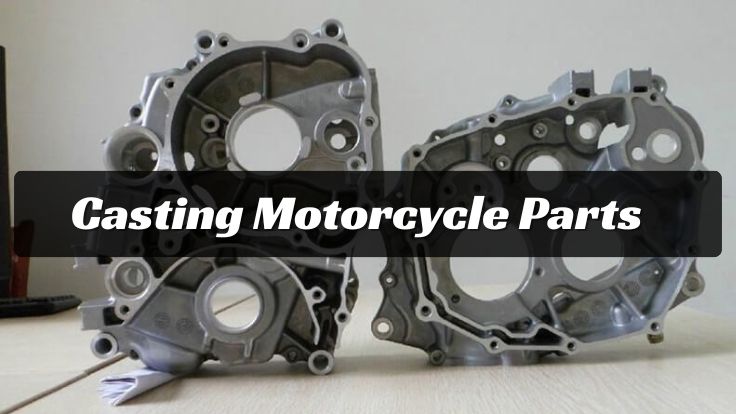

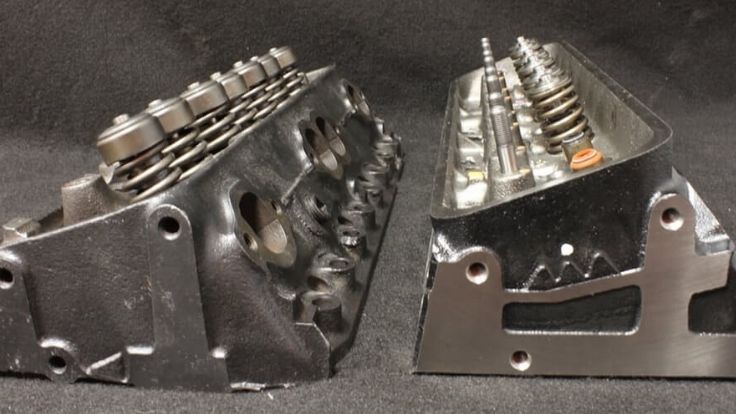
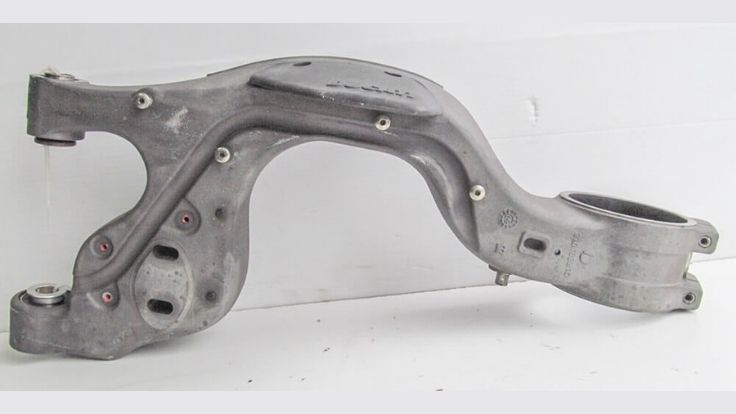
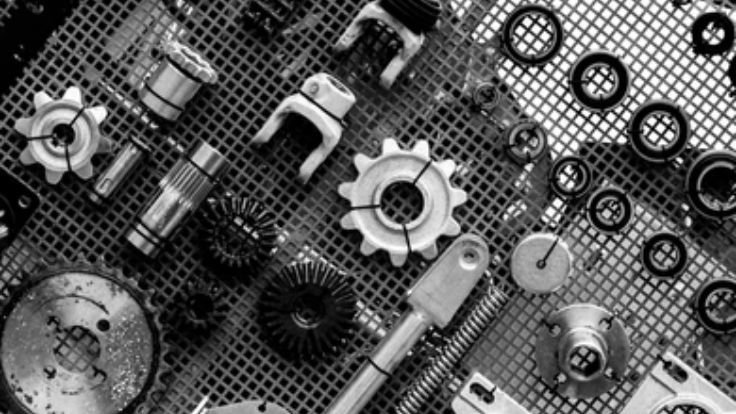
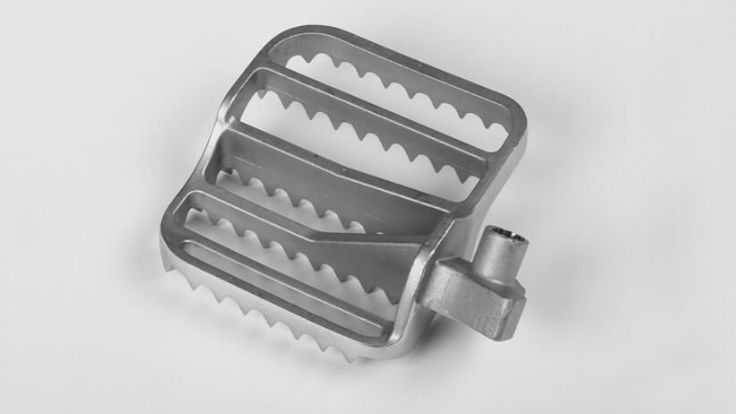



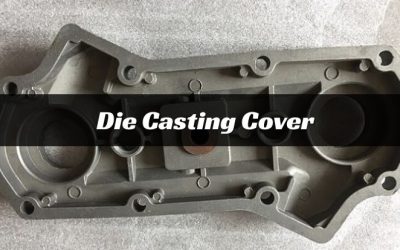
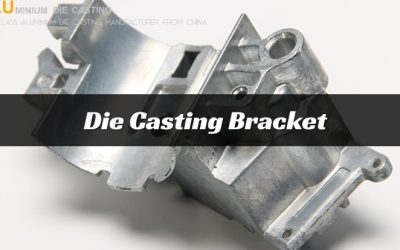
0 Comentarios